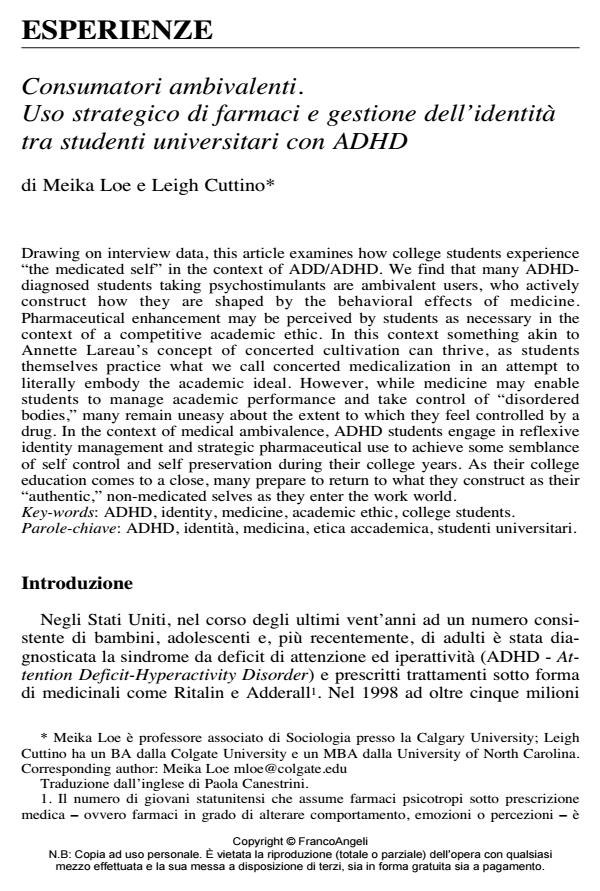Ambivalent consumers. Strategic Pharmaceutical Use and Identity Management among ADHD College Students
Journal title SALUTE E SOCIETÀ
Author/s Meika Loe, Leigh Cuttino
Publishing Year 2012 Issue 2012/suppl. 2
Language Italian Pages 27 P. 105-131 File size 156 KB
DOI 10.3280/SES2012-S02008
DOI is like a bar code for intellectual property: to have more infomation
click here
Below, you can see the article first page
If you want to buy this article in PDF format, you can do it, following the instructions to buy download credits

FrancoAngeli is member of Publishers International Linking Association, Inc (PILA), a not-for-profit association which run the CrossRef service enabling links to and from online scholarly content.
Drawing on interview data, this article examines how college students experience "the medicated self" in the context of ADD/ADHD. We find that many ADHDdiagnosed students taking psychostimulants are ambivalent users, who actively construct how they are shaped by the behavioral effects of medicine. Pharmaceutical enhancement may be perceived by students as necessary in the context of a competitive academic ethic. In this context something akin to Annette Lareau’s concept of concerted cultivation can thrive, as students themselves practice what we call concerted medicalization in an attempt to literally embody the academic ideal. However, while medicine may enable students to manage academic performance and take control of "disordered bodies, many remain uneasy about the extent to which they feel controlled by a drug. In the context of medical ambivalence, ADHD students engage in reflexive identity management and strategic pharmaceutical use to achieve some semblance of self control and self preservation during their college years. As their college education comes to a close, many prepare to return to what they construct as their authentic, non-medicated selves as they enter the work world.
Keywords: ADHD, identity, medicine, academic ethic, college students.
- Digital Health and the Gamification of Life: How Apps Can Promote a Positive Medicalization pp.157 (ISBN:978-1-78754-366-9)
Meika Loe, Leigh Cuttino, Consumatori ambivalenti. Uso strategico di farmaci e gestione dell’identità tra studenti universitari con ADHD in "SALUTE E SOCIETÀ" suppl. 2/2012, pp 105-131, DOI: 10.3280/SES2012-S02008